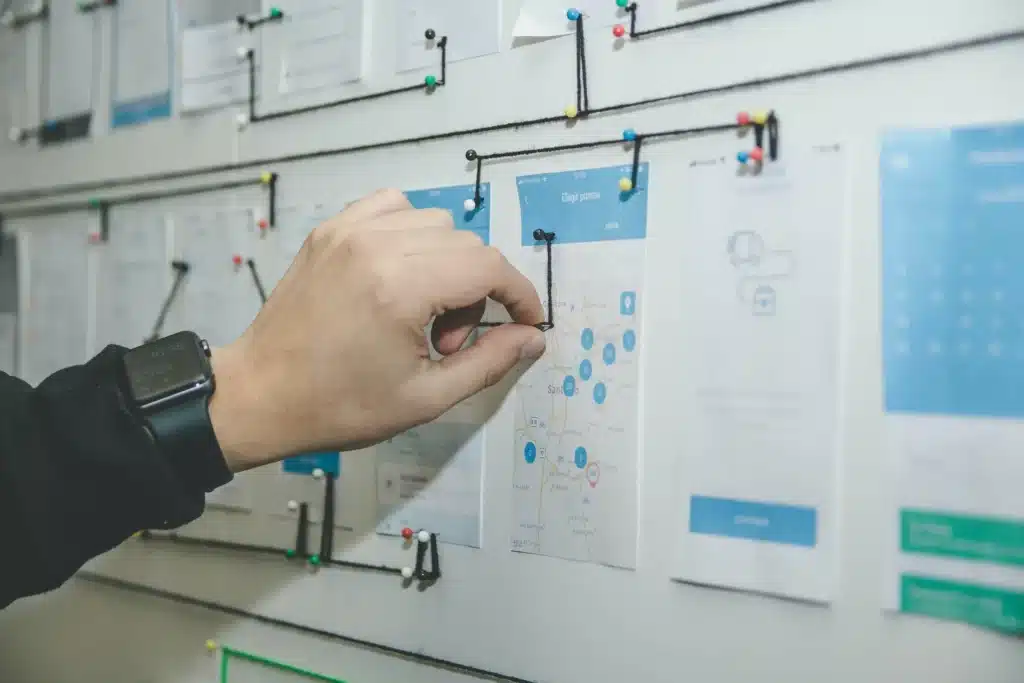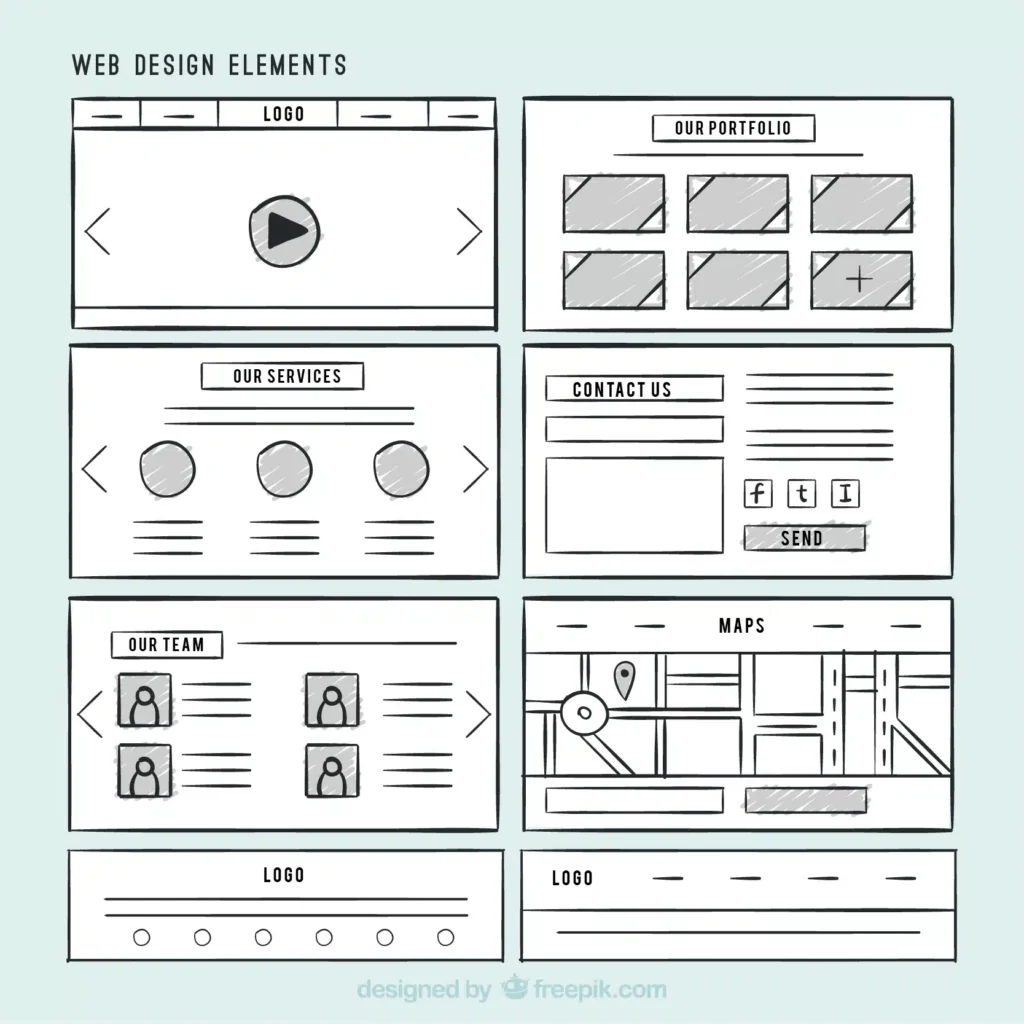User Experience (UX) is a critical component of web design, significantly influencing how users interact with and perceive websites. When executed effectively, UX design can have a profound impact on user satisfaction, usability, and conversion rates.
In this article, we will talk about the role of user experience in web design, and:
- Explore the importance of UX in web design
- Delve into the key elements of UX design
- Discuss the significance of user testing and optimization
- Examine the incorporation of user-centered design principles
- Explore the collaborative approach in UX design
- Consider the future of UX in web design
- Provide practical tips for implementing UX design principles effectively.
Understanding User Experience (UX)
User Experience encompasses the overall satisfaction and experience users have when interacting with a website. It involves understanding user behaviors, needs, and preferences to create a design that meets their expectations and goals. By prioritizing UX, web designers can craft intuitive and enjoyable experiences that keep users engaged and encourage repeat visits.
Importance of User Experience (UX) in Web Design
The importance of User Experience (UX) in web design involves:
1. Enhancing User Satisfaction
A positive UX leads to higher user satisfaction. When users can easily navigate a website, find the information they need, and complete tasks efficiently, they are more likely to have a satisfying experience. This, in turn, enhances their perception of the brand or business behind the website.
2. Improving Usability and Accessibility
UX design focuses on making websites easy to use for a diverse range of users. By implementing intuitive navigation, clear content structure, and accessible design elements, websites become more usable for all visitors, including those with disabilities. Improving accessibility not only broadens the reach of the website but also demonstrates a commitment to inclusivity and equal access for all users.
3. Boosting Conversion Rates
A well-designed UX can contribute to higher conversion rates. By creating a seamless and intuitive user journey, removing friction points, and optimizing call-to-action elements, web designers can guide users toward desired actions, such as making a purchase, signing up for a newsletter, or filling out a form.
When the user experience is frictionless and aligns with users’ expectations, they are more likely to convert into customers or take the desired action.
Key Elements of User Experience (UX) Design
The key elements of UX design include:
1. User Research and Analysis
Understanding the target audience is essential for effective UX design. User research and analysis techniques, such as surveys, interviews, and usability testing, provide insights into user needs, behaviors, and expectations. By gaining a deep understanding of the target users, designers can tailor the UX design to meet their specific requirements.
2. Information Architecture and Navigation
A well-structured information architecture and intuitive navigation system are vital for users to find information quickly and effortlessly. Clear categorization, logical hierarchy, and well-labeled menus contribute to a positive user experience. When users can easily locate what they are looking for and move through the website seamlessly, their satisfaction increases.

3. Visual Design and Branding
Visual design elements, including colors, typography, and imagery, impact the aesthetics and emotional appeal of a website. Consistent branding helps users identify and connect with the website, fostering trust and familiarity. The visual design should align with the brand identity and evoke the desired emotions in users, reinforcing the brand message and building a memorable experience.
4. Interaction Design and Responsiveness
Interaction design focuses on creating meaningful and engaging interactions between users and the website. It involves designing intuitive user interfaces, smooth transitions, and responsive layouts that adapt to different devices and screen sizes. Responsive design is especially crucial in the era of mobile devices, as users expect websites to provide a seamless experience regardless of the device they are using.
User Experience (UX) Testing and Optimization
User Experience (UX) Testing and Optimization involve:
1. Usability Testing
Usability testing involves observing users as they interact with a website to identify usability issues and gather feedback. This feedback helps designers understand user behavior and preferences, leading to iterative improvements in the design. Usability testing can uncover potential stumbling blocks, confusing elements, or areas where users get stuck, allowing designers to address those issues and optimize the user experience.
2. A/B Testing
A/B testing compares two or more versions of a website to determine which one performs better in terms of user engagement and conversion. By testing different design elements or layouts, designers can make data-driven decisions to optimize the user experience. A/B testing helps identify the most effective design choices and enables continuous improvement.
3. Continuous Improvement
UX design is an ongoing process. Collecting user feedback, analyzing website analytics, and staying updated on industry trends allow designers to continuously refine and improve the user experience over time. By keeping a pulse on user needs and preferences, designers can adapt the design to align with evolving user expectations.
Incorporating User-Centered Design Principles
Incorporating User-Centered Design Principles involves:
1. User Persona Development
User personas are fictional representations of target users, based on research and analysis. Designers use personas to better understand their users’ needs, behaviors, and goals, ensuring the design aligns with user expectations. User personas provide a human-centered approach to design, keeping the focus on users throughout the design process.
2. User Journey Mapping
User journey mapping visualizes the step-by-step process a user goes through when interacting with a website. It helps identify pain points, opportunities for improvement, and areas where the user experience can be enhanced. By understanding the user’s journey, designers can identify touchpoints that need optimization and create a cohesive and engaging experience.
3. Wireframing and Prototyping
Wireframes and prototypes provide tangible representations of the website’s structure, layout, and functionality. These early-stage designs allow designers to test and refine the user experience before moving into the development phase. Wireframes help visualize the layout and arrangement of elements, while prototypes provide an interactive experience for users to provide feedback and validate design choices. Our favorite tool for wireframing and prototyping are Elementor and ClickUp.

Collaborative Approach in User Experience (UX) Design
Collaborative Approach in User Experience (UX) Design involves:
1. Cross-Functional Team Collaboration
Effective UX design requires collaboration between designers, developers, marketers, and other stakeholders. By involving various perspectives, expertise, and insights, the final design can better align with user needs and business goals. Collaborative teamwork ensures that the design decisions take into account different viewpoints, resulting in a more comprehensive and holistic user experience.
2. User Feedback and Iterative Design
User feedback is invaluable in UX design. By involving users throughout the design process and incorporating their feedback, designers can ensure the design meets their expectations and resolves any pain points. Iterative design allows for continuous improvement based on user input, leading to a refined user experience that better aligns with user needs.
3. Stakeholder Alignment
Stakeholder alignment is crucial to ensure everyone involved in the web design project understands and prioritizes the user experience. Regular communication, shared goals, and a user-centric mindset help align stakeholders toward creating a successful user experience. By involving stakeholders in the design process and fostering a shared understanding of the user’s needs and business objectives, designers can create a design that serves both the users and the organization.
The Future of User Experience (UX) in Web Design
The Future of User Experience (UX) in Web Design includes:
1. Emerging Technologies and Trends
Advancements in technology, such as artificial intelligence, virtual reality, and voice interfaces, will continue to influence the field of UX design. Designers need to adapt and embrace these technologies to create innovative and immersive user experiences. Embracing emerging technologies allows designers to push the boundaries of user experience and explore new possibilities.
2. Personalization and Adaptive Interfaces
Personalization tailors the user experience based on individual preferences, behavior, and demographics. Adaptive interfaces adjust dynamically to user context, such as device type, location, and interaction history, providing a customized experience. Personalization and adaptive interfaces enhance user engagement and create a sense of relevance and familiarity.
3. Ethical Considerations in UX Design
As technology increasingly shapes our lives, designers must prioritize ethical considerations. Design decisions should respect user privacy, promote inclusivity, and avoid manipulative techniques that exploit user behaviors. Ethical UX design ensures that user experiences are transparent, respectful, and supportive, fostering trust and loyalty among users.
User Experience in Web Design – Conclusion
In conclusion, user experience (UX) plays a pivotal role in web design.
By prioritizing user satisfaction, improving usability, and incorporating user-centered design principles, web designers can create exceptional experiences that engage and delight users.
Through user testing, iterative design, and collaboration, the user experience can be continuously optimized.
As we look to the future, embracing emerging technologies and ethical considerations will further shape the evolving field of UX design.
By understanding the importance of UX and applying its principles, we can create web experiences that leave a lasting impact on users. Implementing UX design effectively requires a combination of research, analysis, creativity, and collaboration, but the rewards are well worth the effort.
By designing with the user in mind, we can create websites that are intuitive, engaging, and successful in achieving their goals.
Why Clio
We hope that you enjoyed reading about the role of user experience in web design. Our recommendations and techniques are based on years of experience helping businesses like yours.
At Clio, we have helped many clients grow their businesses with websites tuned for engagement and conversions.
Contact us if you would like us to help you create a unique website that your visitors will love.



